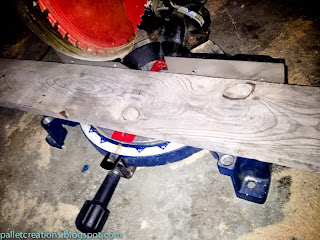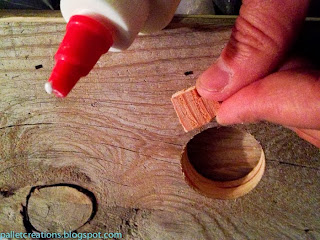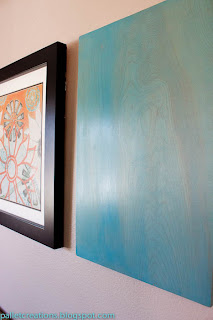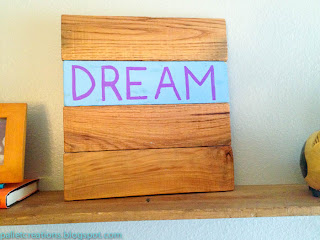| The Finished Project! |
I was recently asked to bring an ornament to a holiday party and of course, I waited until the last minute to buy something. This is a quick and easy project that you can easily replicate for all your friends and family. I'm sure you'll find some holiday party hosts even ask everyone to bring their own ornament for an exchange.
Tools needed:
Saw or other cutting device
Paint (if desired) and rag to wipe on paint
Drill and small bit
Sand paper- medium grit
String, twine or jute (whatever that is)
Scissors or knife to cut string
Sharpie, paint pen or dark colored permanent marker
1. I started by cutting the pallet wood into the shape of a small arrow.
| The Raw Wood |
If you don’t have a saw you can use anything at all to chop off the ends of your small piece of wood to create the triangle point of the wood. I have even used a chisel and hammer to “perforate” the edges and then just snap them off. Some pallet wood is very soft and will chisel easily.
2. I sanded the wood a bit to soften the edges and get rid of any super rough spots.
3. I then dipped a rag into the paint and rubbed it on the wood. I hit all sides of the woods, but I was careful not to use too much. The objective is not to fully paint the wood, but rather to just give it some color. I used a clean part of the rag to rub off a bunch of excess paint. You almost want to use the paint like you would use a stain or varnish. It should dry very quickly, as there shouldn’t be too much paint on your ornament.
4. When the paint has dried to the touch (about 5-15 minutes if you rubbed much of it off) you can sand it again. Don’t sand too much. You want to distress the object and bring out some of the wood grain. You still want to leave much of the color there.
 5. The last step is to simply use your permanent marker to write something creative on your ornament. I just wrote “to Da Beach”, although my wife told me she would have preferred “to The Beach”. Get creative and make a few with different colors and sayings. Make sure the initial paint is dry before writing on the wood or else smearing may occur.
5. The last step is to simply use your permanent marker to write something creative on your ornament. I just wrote “to Da Beach”, although my wife told me she would have preferred “to The Beach”. Get creative and make a few with different colors and sayings. Make sure the initial paint is dry before writing on the wood or else smearing may occur.
6. Lastly, drill two small holes on the top a few inches apart. Insert some twine or other string and knot it. If you only have white string, you can try dipping it in coffee to stain it darker.
7. Don’t forget to sign and date the back! People will fight over these thing if you give them a personal touch.

















